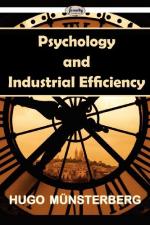The mental effect of a well-adapted advertisement is manifold. It appeals to the memory. Whatever we read at the street corner, or in the pages of the newspaper or magazine, is not printed with the idea that we shall immediately turn to the store, but first of all with the expectation that we keep the content of the advertisement in our memory for a later purchase. It will therefore be the more valuable the more vividly it forces itself on the memory. But if practical books about the art of advertising usually presuppose that this influence on the memory will be proportionate to the effect on the attention, the psychologist cannot fully agree. The advertisement may attract the attention of the reader strongly and yet by its whole structure may be unfit to force on the memory its characteristic content, especially the name of the firm and of the article. The pure memory-value is especially important, as according to a well-known psychological law the pleasure in mere recognition readily attaches itself to the recognized object. The customer who has the choice among various makes and brands in the store may not have any idea how far one is superior to another, but the mere fact that one among them bears a name which has repeatedly approached his consciousness before through advertisements is sufficient to arouse a certain warm feeling of acquaintance, and by a transposition of feeling this pleasurable tone accentuates the attractiveness of that make and leads to its selection. This indirect help through the memory-value is economically no less important than the direct service.
In order to produce a strong effect on memory the advertisement must be easily apprehensible. Psychological laboratory experiments with exact time-measurement of the grasping of various advertisements of the same size for the same article, but in different formulations, demonstrated clearly how much easier or harder the apprehension became through relatively small changes. No mistake in the construction of the advertisement causes so much waste as a grouping which makes the quick apperception difficult. The color, the type, the choice of words, every element, allows an experimental analysis, especially by means of time-measurement. If we determine in thousandths of a second the time needed to recognize the characteristic content of an advertisement, we may discriminate differences which would escape the naive judgment, and yet which in practical life are of considerable consequence, as the effect of a deficiency is multiplied by the number of readers.
We must insist on the further demand that the advertisement make a vivid impression, so that it may influence the memory through its vividness. Size is naturally the most frequent condition for the increase of vividness, but only the relative size is decisive. The experiment shows that the full-page advertisement in a folio magazine does not influence the memory more than the full page in a quarto magazine, if the reader is for the time




